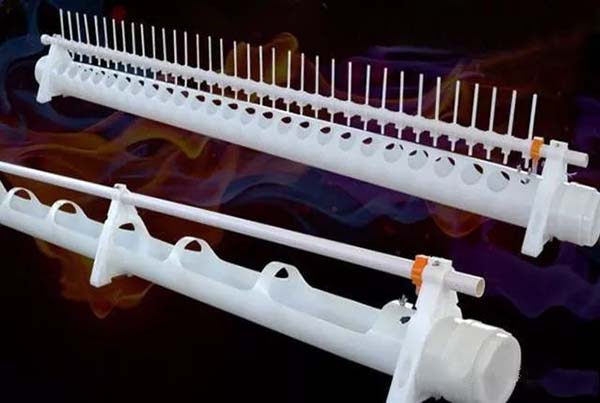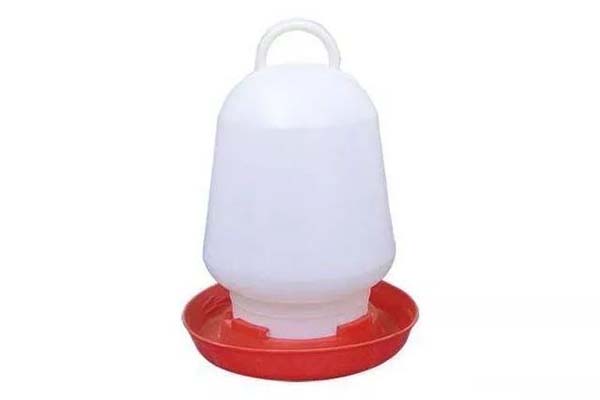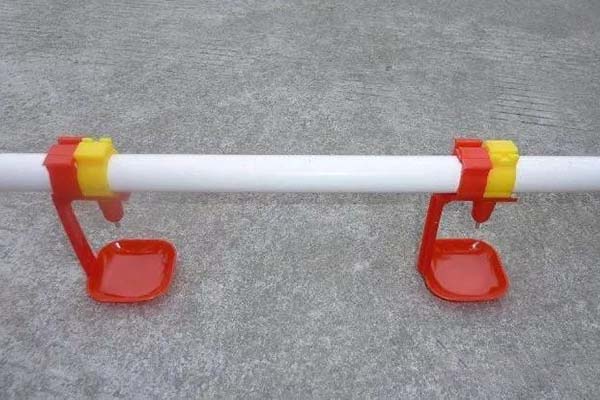Farmers all know the importance of water in raising chickens. The water content of the chicks is about 70%, and the water content of the chicks within 7 days of age is as high as 85%, so the chicks are easily dehydrated. Chicks have a high mortality rate after dehydration and are weak chicks even after recovery.
Water also has a great impact on adult chickens. Chickens lack water has a great impact on egg production. Resuming drinking water after chickens lack water for 36 hours will cause an irreversible drop in egg production. In high temperature weather, chickens are short of water. Massive deaths in a matter of hours.
At present, there are five types of drinking fountains commonly used in chicken farms: trough drinking fountains, vacuum drinking fountains, Plasson drinking fountains, cup drinking fountains, and nipple drinking fountains.
Trough drinker
The trough drinking fountain can best see the shadow of the traditional drinking utensils. The trough drinking fountain has developed from the need for manual water supply to the current automatic water supply.
The advantages of the trough drinker: the trough drinker is easy to install, not easy to damage, easy to move, without water pressure requirements, and can be connected to a water pipe or a water tank to meet the drinking water of large groups of chickens at the same time (one trough drinker is equivalent to 10 Plasones water supply from the drinking fountain).
Disadvantages of trough drinkers: the water tank is exposed to the air, and the feed, dust and other sundries are easy to fall into the tank, causing drinking water pollution; Sick chickens can easily transmit pathogens to healthy chickens through drinking water; exposed water tanks will cause the chicken house to become wet; Waste water; need manual cleaning every day.
Installation requirements for trough drinkers: trough drinkers are installed outside the fence or on the wall to prevent chickens from stepping on and polluting the water source.
The length of the trough drinker is mostly 2 meters, and it can be connected to 6PVC water pipes, 15mm hoses, 10mm hoses and other models. The trough drinkers can be connected in series to meet the drinking water requirements of large-scale farms.

Vacuum drinker
The vacuum drinking fountain, also known as the bell-shaped drinking fountain, is the most familiar chicken drinking fountain. Although it has natural defects, it has a huge user market and is enduring for a long time.
Advantages of vacuum drinking fountains: low cost, a vacuum drinking fountain is as low as about 2 yuan, and the highest is only about 20 yuan. Wear-resistant and durable, it is often seen that there is a drinking kettle in front of rural houses. After wind and rain, it can be used as usual with almost zero failures.
Disadvantages of vacuum drinking fountains: It needs to be cleaned manually 1-2 times a day, and water is manually added many times, which is time-consuming and laborious; water is easily polluted, especially for chicks (chicks are small and easy to step in).
The installation of the vacuum drinking fountain is simple and consists of only the tank body and the water tray. When using, fill the tank with water, screw on the water tray, and then buckle it upside down on the ground, which is simple and easy to use, and can be placed anytime, anywhere.

Note: In order to reduce the splashing of drinking water, it is recommended to adjust the height of the pad according to the size of the chicken, or to hoist it. Generally, the height of the water tray should be at the same level as the chicken's back.
Nipple drinker
The nipple drinker is a mainstream drinker in chicken farms. It is very common in large-scale farms and is currently the most recognized automatic drinker.
The advantages of the nipple drinker: sealed, separated from the outside world, not easy to be polluted, and can be cleaned effectively; not easy to leak; reliable water supply; water saving; automatic water addition.
Disadvantages of nipple drinkers: Dosing to cause blockages and difficult to remove; difficult installation; high cost; uneven quality; difficult to clean.
The nipple drinker should be used in conjunction with more than 4 pipes and 6 pipes. The water pressure of chicks is controlled at 14.7-2405KPa, and the water pressure of adult chickens is controlled at 24.5-34.314.7-2405KPa.

Note: water immediately after installing the teat, as the chicken will peck it and will not peck it again once there is no water. It is recommended not to use rubber seals that are easy to age and leak, and PTFE seals can be selected.
Post time: Jul-06-2022
